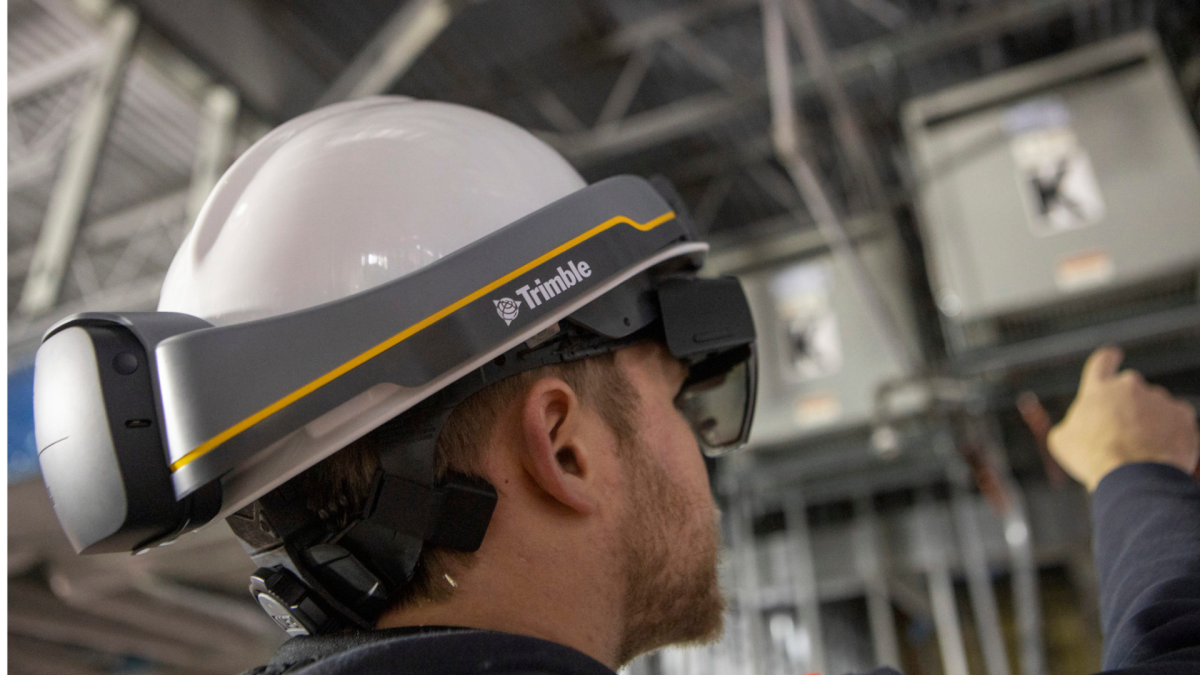
Supplied by PR
This is the second part of a two part article. In recent years, the construction industry has seen a significant increase in the adoption of mixed reality technology. Mixed reality, a combination of virtual and augmented reality, offers a new way of visualising and interacting with construction and mining projects, allowing for more accurate and efficient planning, design, and construction processes.
Benefits of using mixed reality technology
Furthermore, the Trimble XR10 enables Xodus Enterprises to make changes and corrections to the model quickly and efficiently. The company uploads a new model to the Trimble Connect cloud-based common data environment every two to three weeks, allowing engineers to identify and correct any issues that may have arisen in the previous model. This iterative approach enables the company to stay on top of any clashes, ensuring that the project stays on schedule, is current and on budget.
“In addition, because the visuals are 3D and everything is portrayed exactly as it will be once installed or constructed, enabling a thorough evaluation, this generates confidence in the customer and expedites decision making. For example, you can mount the headset on the decision maker, the CEO for example, to assist them to understand how things are going to appear on the site. They can see the pictorial for themselves right there, as you walk through the site.
“If you walk upstairs, are you going to reach the valve or is it too high or is it too low? That is literally what this had done for us in the last shutdown and that was I think one of the biggest success stories. Clients get to see for themselves how accurate this technology is. We literally got the project signed off in five minutes,” Pierre explains.
Another excellent use of the headset is to extract/move equipment within a confined space. By creating a scaled digital model of equipment set to be moved (in or out) and loading the model onto the headset it is possible to walk through the space where the equipment will be lifted, moved etc and perform a ‘dry run’ to see if there are obstacles in the way of the anticipated manoeuvre.
“Using the headset with the loaded model of the piece of equipment, I was able to seamlessly ‘move’ it through the space without incident, proving the accuracy of the software,” Pierre adds.
In addition, Brent Godfrey, Construction Technology Manager, BuildingPoint SA (Pty) Ltd, points out, “When measurement differences are detected, the device enables you to take measurements between the virtual model and the real world. There’s a built-in lidar scanner inside the headset. The entire time the headset is busy scanning your environment, you can take physical measurements where you see those discrepancies between what is physically there and the model. You can snap to the model and snap to the real world and measure these incongruities that you can see and quantify them live.”
Real-world examples of using the XR10 in project planning
Further down the line Pierre sees the XR10 being integrated not just in site checking but from a maintenance point of view; accessing different kinds of equipment on site, where through the headset crews can check which machine is close to its maintenance cycle; which one has to be replaced, and more, with data drawn from the central control system.
“This technology has opened quite a few new business opportunities for me in my company, from a quality control point of view, in three areas: evaluation before a site installation, during site installation, and post-construction quality control. For the first time, it has bridged the gap between signed-off drawings and what is manufactured and delivered to the site. It is the first time that you can literally opt for the model that has been created, and then have the drawings populated from the model. We check the model on site so there is no discrepancy made by going from one person to another – there is no paperwork in between; you literally see it on site as it will appear. What you see is what you get, there are no sudden surprises or budget shocks,” Pierre enthuses.
Conclusion
Overall, the adoption of mixed reality technology has proven to be a game-changer for Xodus Enterprises. It has enabled the company to stay ahead of the curve in the adoption of new technologies, allowing it to remain competitive and innovative.
By using the Trimble XR10 and Trimble Connect for HoloLens, the company has been able to minimise discrepancies and errors, resulting in improved efficiency, cost savings, and higher-quality work. Xodus Enterprises is an excellent example of how mixed reality technology can revolutionise project planning and progress tracking in the construction and mining industries.
More news
- CELEBRATING EXCELLENCE IN THE RESIDENTIAL PROPERTY SECTOR
- PART 4: GIBS PANEL DISCUSSES INTEMEDIATE CITIES ROLE IN AFRICA’S DEVELOPMENT
- EXPOSED AGGREGATE PAVERS COMPLEMENT NEW LIFESTYLE CENTRE
- GIBS PANEL EXPLORES ROLE OF INTERMEDIATE CITIES IN SA’S DEVELOPMENT PART 3
- CITI-CON’S CONCRETE KNOWLEDGE SUCCESSFULLY DEPLOYED ON NEW LANDMARK DEVELOPMENT

